Abstract
College students responded for monetary rewards in two experiments on choice between differentially segmented aperiodic schedules of reinforcement. On a microcomputer, the concurrent chains were simulated as an air-defense video game in which subjects used two radars for detecting and destroying enemy aircraft. To earn more cash-exchangeable points, subjects had to shoot down as many planes as possible within a given period of time. For both experiments, access to one of two radar systems (terminal link) was controlled by a pair of independent concurrent variable-interval 60-s schedules (initial link) with a 4-s changeover delay always in effect. In Experiment 1, the appearance of an enemy aircraft in the terminal link was determined by a variable-interval (15 s or 60 s) schedule or a two-component chained variable-interval schedule of equal duration. Experiment 2 was similar to Experiment 1 except for the segmented schedule, which had three components. Subjects preferred the unsegmented schedule over its segmented counterpart in the conditions with variable-interval 60 s, and preference tended to be more pronounced with more components in the segmented schedule. These findings are compatible with those from previous studies of periodic and aperiodic schedules with pigeons or humans as subjects.
Keywords: choice, psychological distance, interreinforcement interval, aperiodic schedules, concurrent chains, computer game, humans
Full text
PDF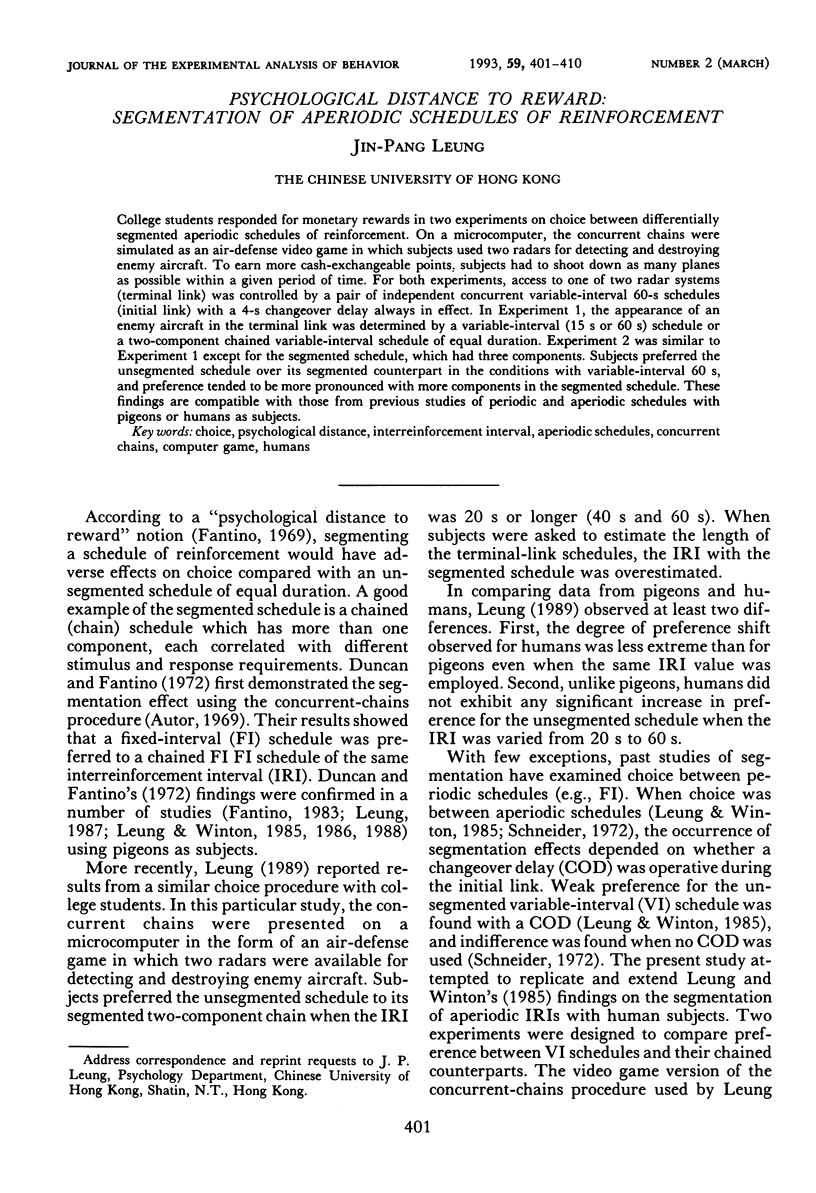
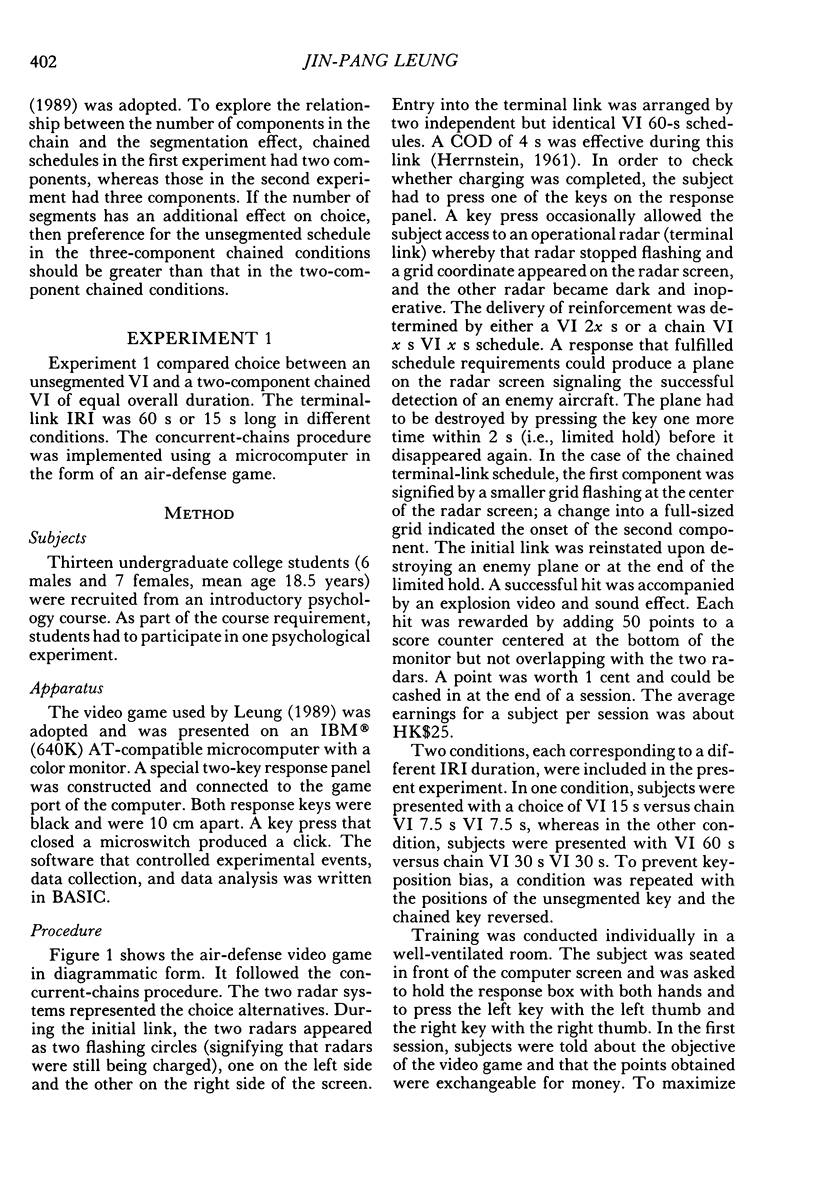
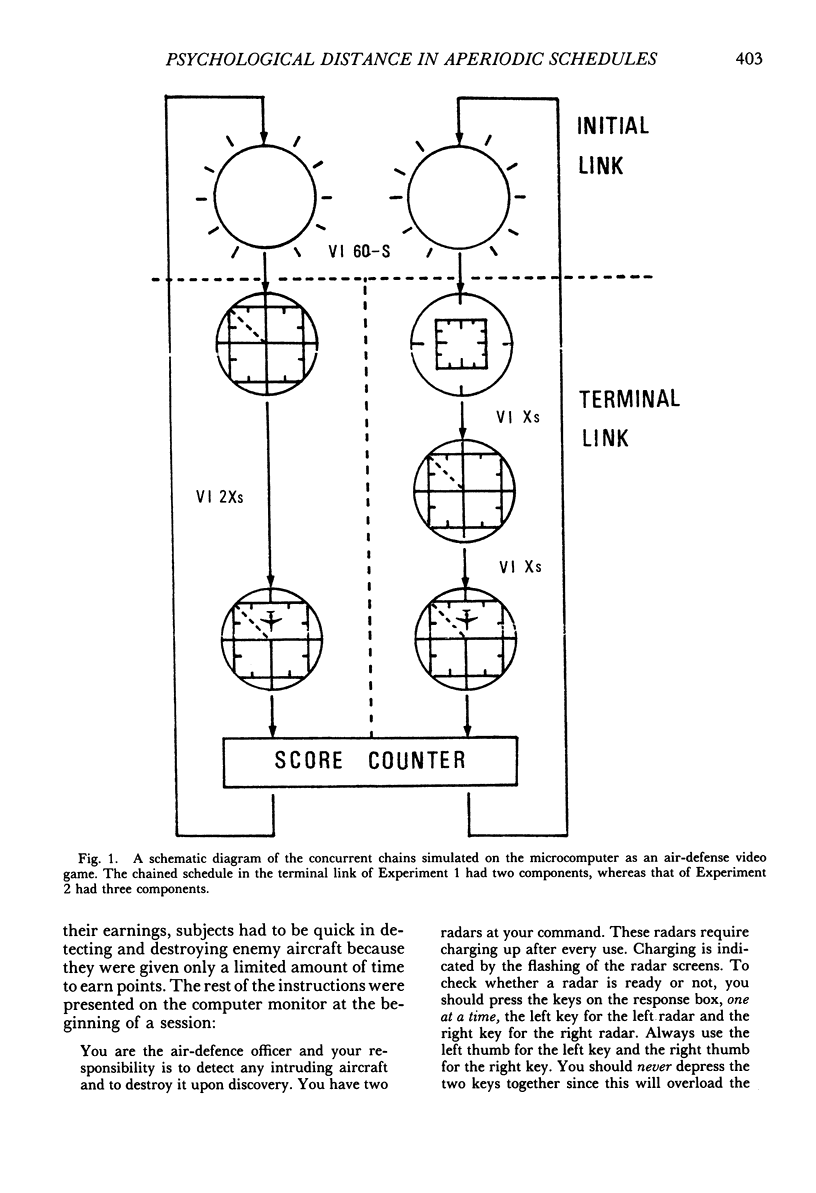
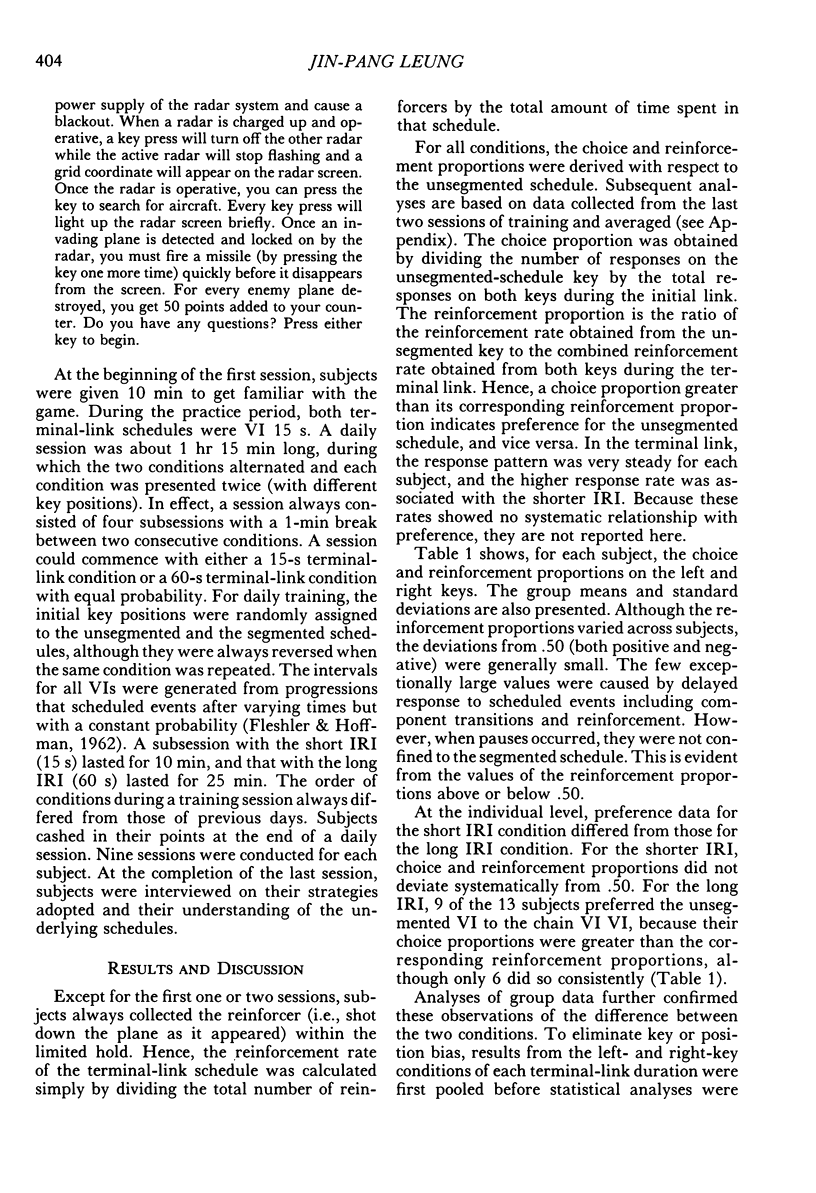
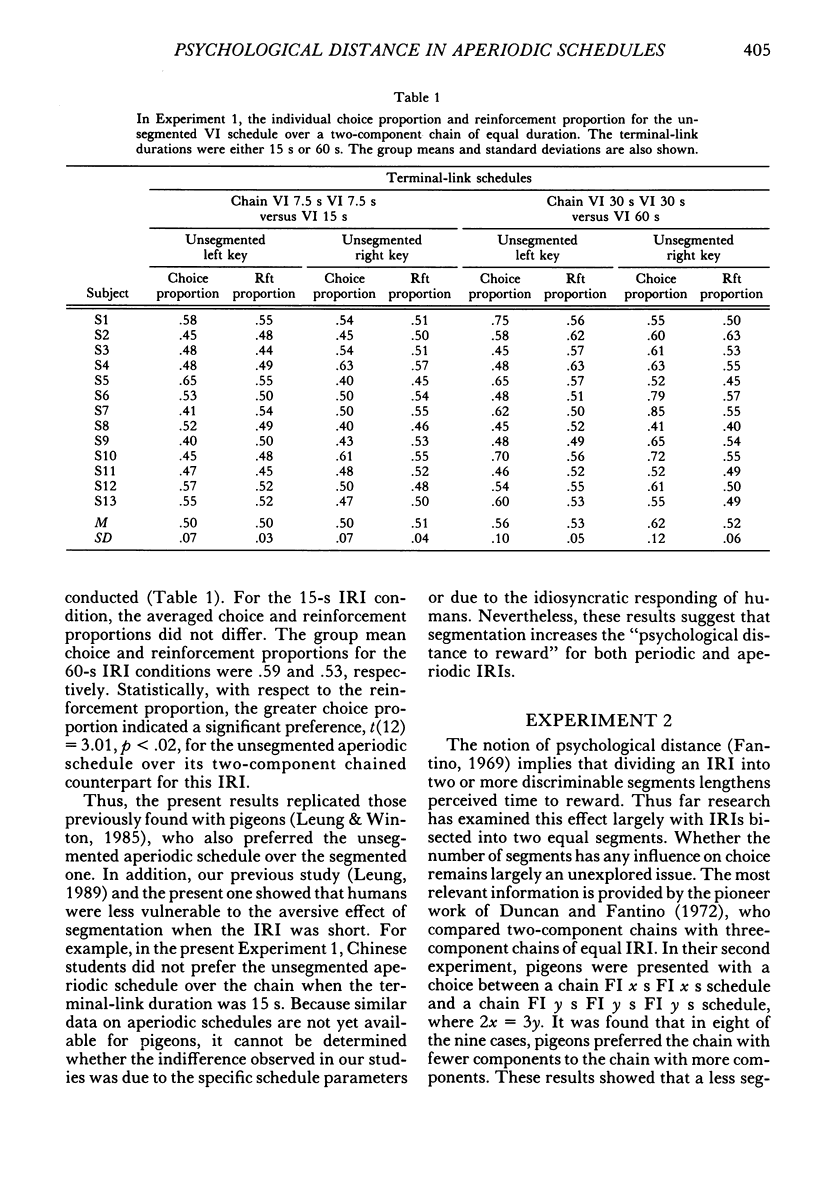
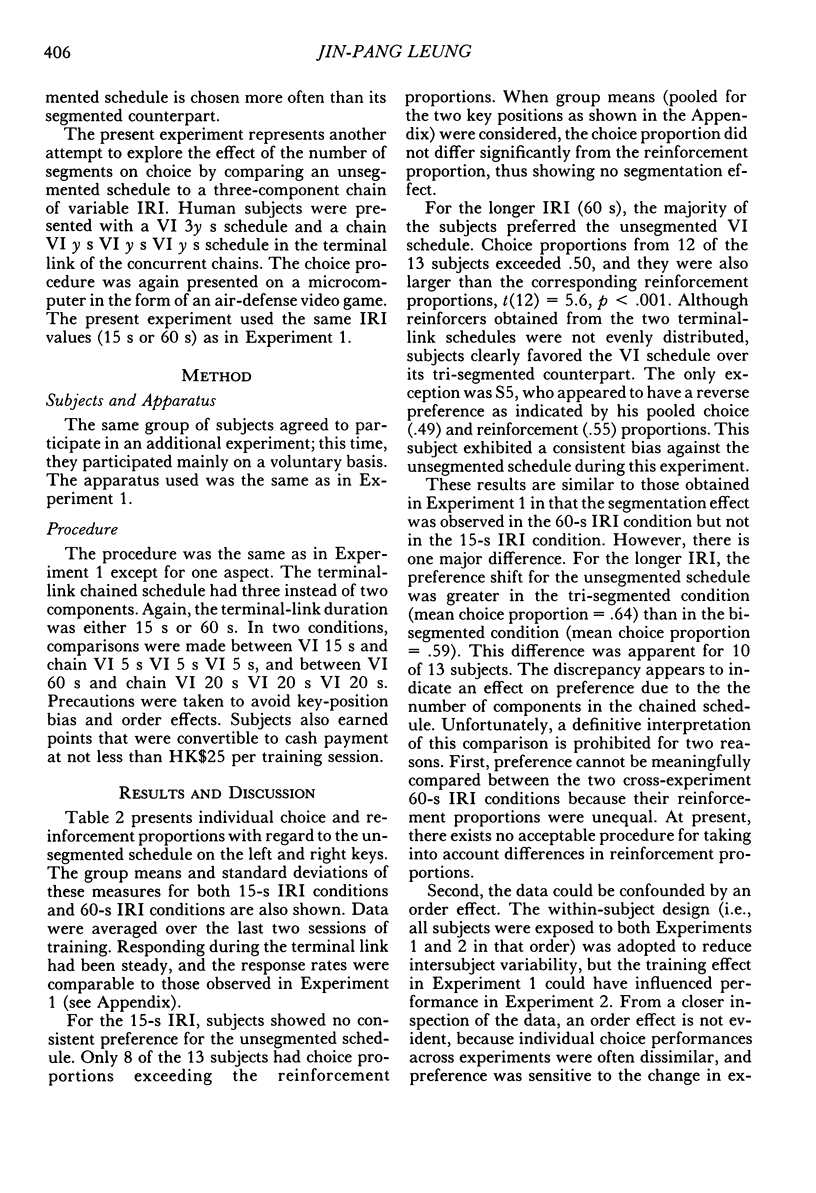
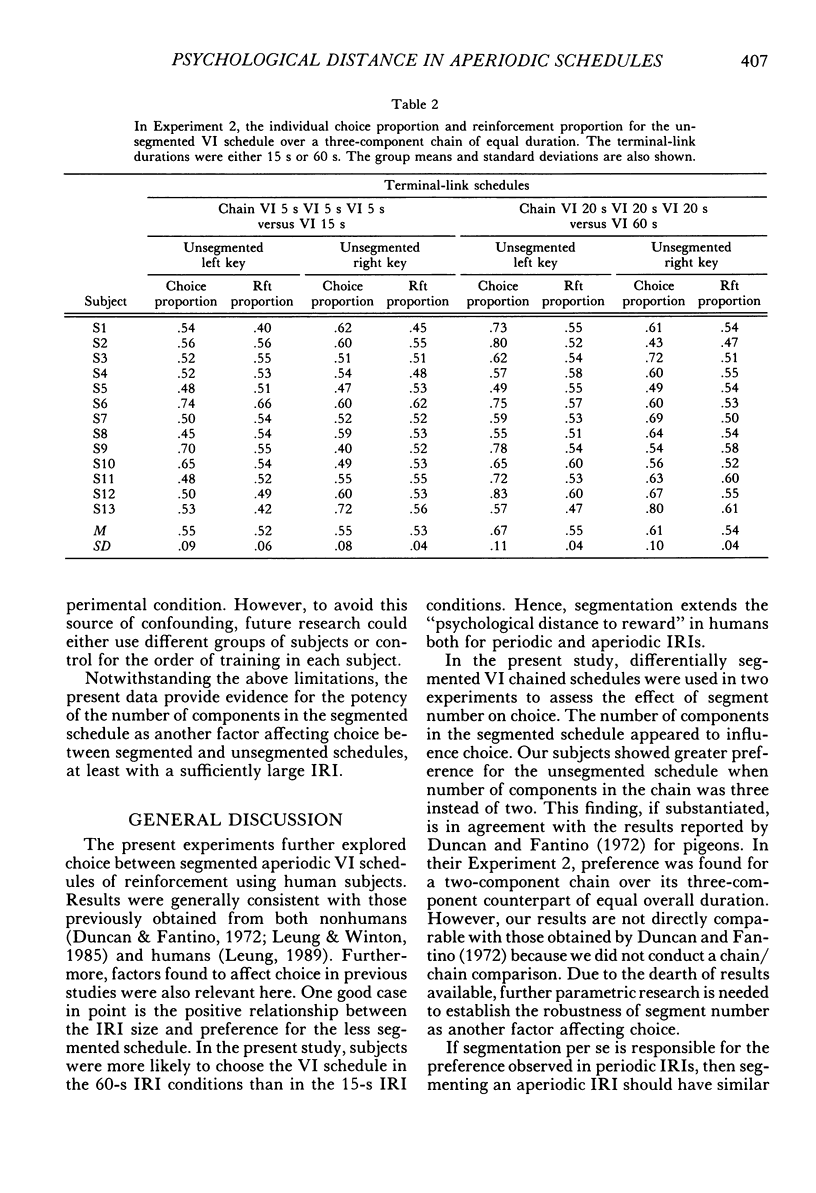
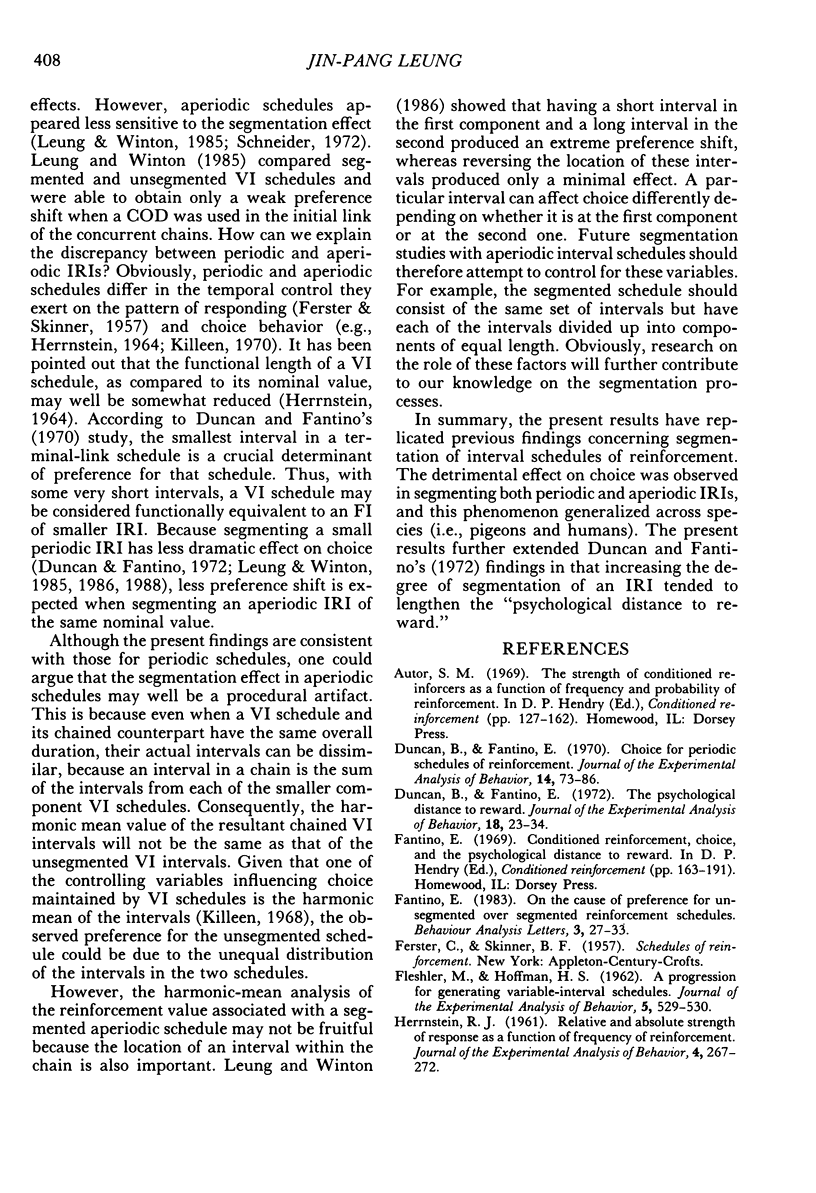
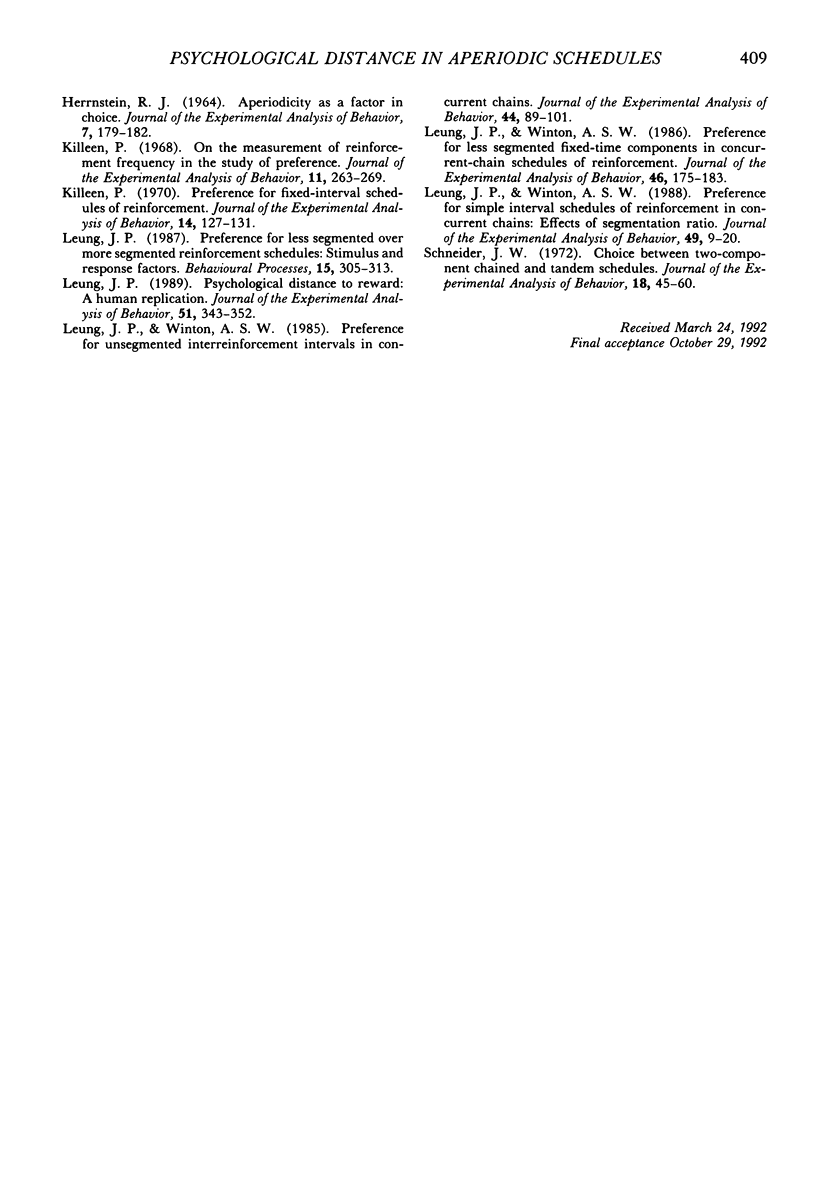
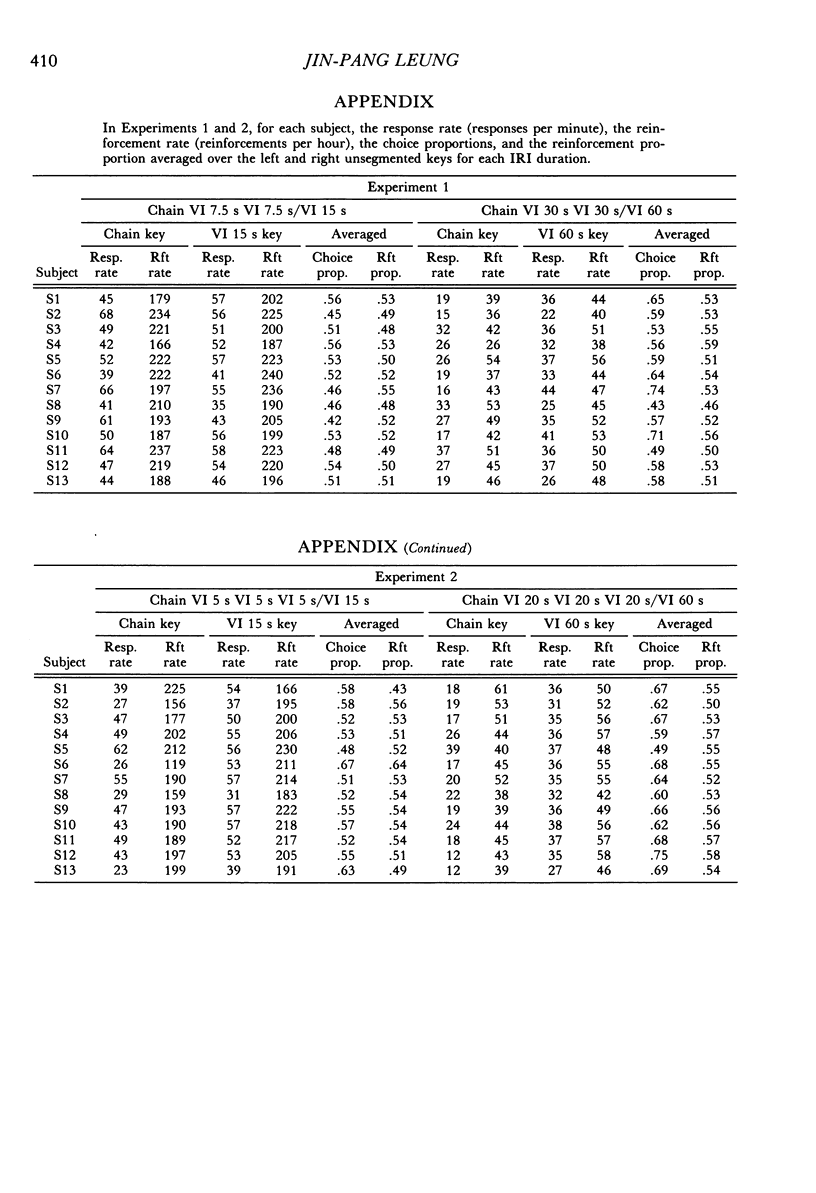
Selected References
These references are in PubMed. This may not be the complete list of references from this article.
- Duncan B., Fantino E. Choice for periodic schedules of reinforcement. J Exp Anal Behav. 1970 Jul;14(1):73–86. doi: 10.1901/jeab.1970.14-73. [DOI] [PMC free article] [PubMed] [Google Scholar]
- Duncan B., Fantino E. The psychological distance to reward. J Exp Anal Behav. 1972 Jul;18(1):23–34. doi: 10.1901/jeab.1972.18-23. [DOI] [PMC free article] [PubMed] [Google Scholar]
- FLESHLER M., HOFFMAN H. S. A progression for generating variable-interval schedules. J Exp Anal Behav. 1962 Oct;5:529–530. doi: 10.1901/jeab.1962.5-529. [DOI] [PMC free article] [PubMed] [Google Scholar]
- HERRNSTEIN R. J. APERIODICITY AS A FACTOR IN CHOICE. J Exp Anal Behav. 1964 Mar;7:179–182. doi: 10.1901/jeab.1964.7-179. [DOI] [PMC free article] [PubMed] [Google Scholar]
- HERRNSTEIN R. J. Relative and absolute strength of response as a function of frequency of reinforcement. J Exp Anal Behav. 1961 Jul;4:267–272. doi: 10.1901/jeab.1961.4-267. [DOI] [PMC free article] [PubMed] [Google Scholar]
- Killeen P. On the measurement of reinforcement frequency in the study of preference. J Exp Anal Behav. 1968 May;11(3):263–269. doi: 10.1901/jeab.1968.11-263. [DOI] [PMC free article] [PubMed] [Google Scholar]
- Killeen P. Preference for fixed-interval schedules of reinforcement. J Exp Anal Behav. 1970 Sep;14(2):127–131. doi: 10.1901/jeab.1970.14-127. [DOI] [PMC free article] [PubMed] [Google Scholar]
- Leung J. P. Psychological distance to reward: A human replication. J Exp Anal Behav. 1989 May;51(3):343–352. doi: 10.1901/jeab.1989.51-343. [DOI] [PMC free article] [PubMed] [Google Scholar]
- Leung J. P., Winton A. S. Preference for less segmented fixed-time components in concurrent-chain schedules of reinforcement. J Exp Anal Behav. 1986 Sep;46(2):175–183. doi: 10.1901/jeab.1986.46-175. [DOI] [PMC free article] [PubMed] [Google Scholar]
- Leung J. P., Winton A. S. Preference for simple interval schedules of reinforcement in concurrent chains: Effects of segmentation ratio. J Exp Anal Behav. 1988 Jan;49(1):9–20. doi: 10.1901/jeab.1988.49-9. [DOI] [PMC free article] [PubMed] [Google Scholar]
- Leung J. P., Winton A. S. Preference for unsegmented interreinforcement intervals in concurrent chains. J Exp Anal Behav. 1985 Jul;44(1):89–101. doi: 10.1901/jeab.1985.44-89. [DOI] [PMC free article] [PubMed] [Google Scholar]
- Schneider J. W. Choice between two-component chained and tandem schedules. J Exp Anal Behav. 1972 Jul;18(1):45–60. doi: 10.1901/jeab.1972.18-45. [DOI] [PMC free article] [PubMed] [Google Scholar]


